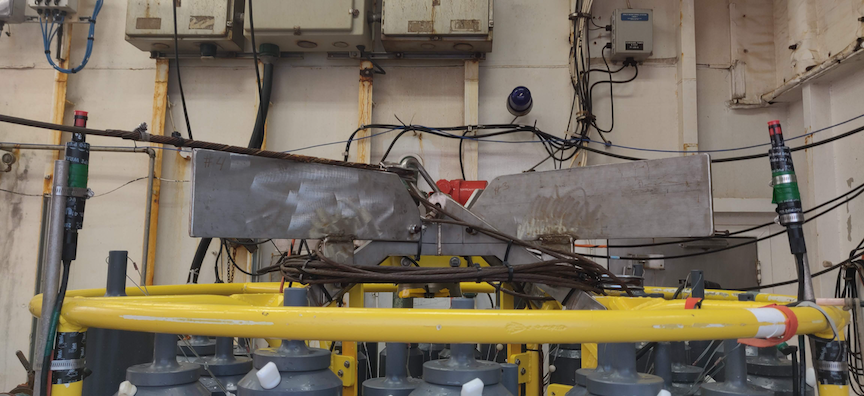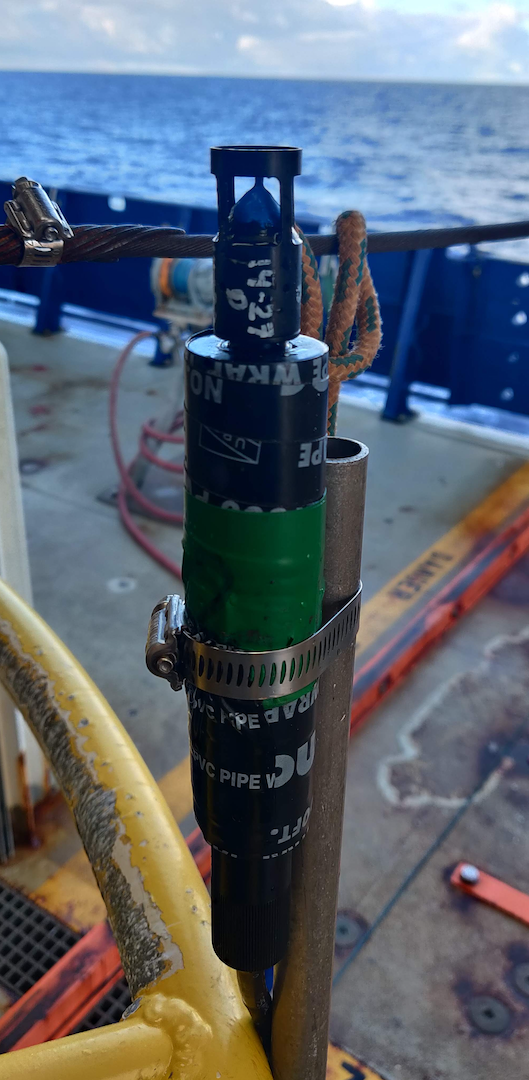Chipods¶
- PI
Jonathan Nash (OSU)
Overview¶
Chipods are instrument packages that measure turbulence and mixing in the ocean.
Specifically, they are used to compute turbulent diffusivity of heat (K) which is inferred from measuring dissipation rate of temperature variance ( ) from a shipboard CTD.
Chipods are self-contained, robust and record temperature and derivative signals from FP07 thermistors at 100 Hz; they also record sensor motion at the same sampling rate.
Details of the measurement and our methods for processing
) from a shipboard CTD.
Chipods are self-contained, robust and record temperature and derivative signals from FP07 thermistors at 100 Hz; they also record sensor motion at the same sampling rate.
Details of the measurement and our methods for processing  can be found in [Moum_and_Nash2009].
In an effort to expand our global coverage of deep ocean turbulence measurements, the ocean mixing group at Oregon State University has supported chipod measurements on all of the major global repeat hydrography cruises since December 2013.
can be found in [Moum_and_Nash2009].
In an effort to expand our global coverage of deep ocean turbulence measurements, the ocean mixing group at Oregon State University has supported chipod measurements on all of the major global repeat hydrography cruises since December 2013.
System Configuration and Sampling¶
Three chipods were mounted on the rosette to measure temperature (T), its time derivative (dT/dt), and x and z (horizontal and vertical) accelerations at a sampling rate of 100 Hz. Two chipods were oriented such that their sensors pointed upward. The third one was pointed downward.
The up-looking sensors were positioned higher than the Niskin bottles on the rosette in order to avoid measuring turbulence generated by flow around the rosette and/or its wake while its profiling speed oscillates as a result of swell-induced ship-heave. The down-looking sensors were positioned as far from the frame as possible and as close to the leading edge of the rosette during descent as possible to avoid measuring turbulence generated by the rosette frame and lowered ADCP.
The chipods were turned on by connecting the sensors to the pressure case at the beginning of the cruise. They continuously recorded data until the end of the leg. Only one issue occurred with the chipods following the recovery of cast 04201. The sensor tip (14-32) had popped out of the holder and water had gotten inside. The tip and holder were replaced (14-36) on recovery.

Upward-looking chipod sensors attached to the rosette.

Downward-looking chipod sensor attached to the rosette.

Highly sensitive temperature probe, which is sampled at 100Hz.¶
Logger Board SN |
Pressure Case SN |
Up/Down Looker |
Cast Used |
|---|---|---|---|
2013 |
Ti 44-12 |
Up |
1-117 |
2032 |
Ti 44-15 |
Up |
1-117 |
2014 |
Ti 44-08 |
Down |
1-117 |
- Moum_and_Nash2009
Moum, J., and J. Nash, Mixing Measurements on an Equatorial Ocean Mooring, Journal of Atmospheric and Oceanic Technology, 26(2), 317–336, 2009